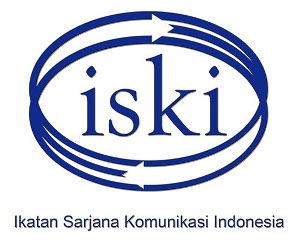TRANSFORMASI SIMBOLIK HOMOSEKSUAL DI TELEVISI (Sebuah Studi Analisis Semiotika Barthes dan Semiotika Sosial M.A.K. Halliday dalam Program CS: File Kompas TV)
Abstract
As an audio-visual medium, television has a view majesty tasks. Television is a medium to informed, educated, to entertained, and a medium to transformed the value of life. But the magic box, has a great power. Television has a power to create a new history and to reduce cognition for public. And it is happen to homosexsual too. By the Crime Story (CS): File programmes, Kompas TV constructed people mind that homosexual is a huge moral panic. Because of homoseksuality has pictured as an abnormal behavior, psycopat, and a sinner. From the semiotic and social semiotic as a methodology, the pictured of homosexuality has been construted to the public mind. The CS: File crew has been transformed the homosexuality as a television show. The homosexuality shows as an abnormal behavior, psycopatic, a sinner, and also a criminal. From the shows, the capitalist as a dominant class has been dominated homoseskuality. The television holly tasks as mass media, has been transformed to the capitalist tribute.
Keywords: Symbolic Transformation, Gay, Television, Semiotics, Programme
Full Text:
PDFReferences
Berger, Arthur Asa. 2000. Media Analysis Techniques terj. Setio Budi HH. Penerbitan Universitas Atma Jaya.
Budiman, Kris. 1999. Kosa Semiotika. LkiS.
Bunguin, Burhan. 2003. Pornomedia: Konstruksi Sosial Teknologi Telematika dan Perayaan Seks di Media Massa. Kencana.
Danesi, Marcel. 2012. Pesan Tanda dan Makna. 2004. Jalasutra.
Denzin, Norman K, dan Yvonna S. Lincoln. 2000. Handbook of Qualitative Research. Sage Publication.
Dubois, Michael. 1993. Les fondateurs de la pensée sociologique. Édition Marketing.
Eriyanto. 2013. Analisis Naratif. Kencana Prenada Media Group.
Fiske, John. 2004.
Culural and Communication Studies. Jalasutra.
Halliday, M.A.K. 1978. Language as Social Semiotic: The Social Interpretation of Language and Meaning. London. Edward Arnold.
Hamad, Ibnu, Agus Sudibyo, dan Muhamad Qodar. 2001. Kabar-kabar Kebencian Prasangka Agama di Media Massa. ISAI.
Haryanto, Sindung. 2013. Dunia Simbol Orang Jawa. Kepel Press.
Littlejohn, Stephen W. 1999. Theories of Human Communication. Belmont-Toronto: Wadsworth Publishing Company.
Makkulau, M. Farid. 2008. Manusia Bissu. Pustaka Refleksi. McQuail, Denis. Mass Communication, 4th Edition. London. Sage Publication.
Mears, Fredrick Mears, dan Gratchel Robert J. 1979. Fundamentals of Abnormal Psychology. College Publishing Company.
Mulyana, Dedy. 2002. Metode Penelitian Kualitatif: Paradigma Baru Ilmu Komunikasi dan Ilmu Sosial Lainnya. PT. Remaja Rosda Karya Patton, M.Q. 2002. Qualitative Research and Evaluation Methods 3rd Edittion. Sage Publication.
Rasyid, Mochamad Riyanto. 2013. Kekerasan di Layar Kaca. Penerbit Buku Kompas.
Ritzer, George, dan Douglas J. Goodman. 2011. Teori Marxis dan Berbagai Ragam Teori Neo-Marxism. Terjemahan Nurhadi. Yogyakarta : Kreasi Wacana.
SK, Ishadi, 2014. Media dan Kekuasaan: Televisi di Hari-Hari Terakhir Presiden Soeharto, PT Kompas Media Nusantara.
Sobur, Alex. 2001. Analisis Teks Media: Suatu Pengantar Analisis Wacana, Analisis Semiotik, dan Analisis Framing. PT Remaja Rosdakarya. Suhardono, Rene. 2013. Your Journey To Be The Ultimate You 2. Penerbit Buku Kompas.
W.L., Neuman. 2006. Social Research Methods: Qualitative and Quantitative Approach 6th Edition. MA : Pearson Education Inc.
Akbar, Akhmad Zaini Akbar. 1999. Aliran Empiris dan Kritis dalam Penelitian Komunikasi Massa. Jurnal Ikatan Sarjana Komunikasi Massa (ISKI) No.3.
Almanak Pers Antara 1976. 1976. Penerbit LKBN “Antara. Dictionnaire de l’homophobie. 2005. Paris. Presses Universitaires de France. Handbook Broadcast Management Trainne Kompas TV. 2012. Kompas TV. JURNAL PANTAU, Edisi 08/ Maret-April 2000. Marching, Soe-Tjen. 2010 Editorial, Jurnal Gandrung, Vol.1. No. 1. Saskia E. Wieringa, Saskia E. 2010. Keanekaragaman Gender di Asia: Pertarungan Diskursif dan Implikasi Legal. Jurnal Gandrung Vol.1. No. 2.
DOI: http://dx.doi.org/10.30813/s:jk.v8i1.959
Refbacks
- There are currently no refbacks.
Copyright (c) 2017 SEMIOTIKA: Jurnal Komunikasi
Publisher
Editorial Board SEMIOTIKA: Jurnal Komunikasi
Department of Communication
Faculty of Social Science and Humanities
"UNIVERSITAS BUNDA MULIA"
Lodan Raya St No.2, North Jakarta 14430
Phone: +62 21 692 9090 ext. 348
Email: SEMIOTIKA@ubm.ac.id













